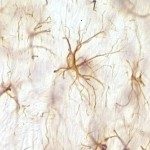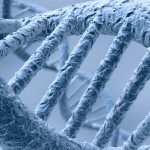Link to Pubmed [PMID] – 18641337
J. Immunol. 2008 Aug;181(3):2001-9
In addition to producing conventional tetrameric IgGs, camelids have the particularity of producing a functional homodimeric IgG type lacking L (light) chains and only made up of two H (heavy) chains. This nonconventional IgG type is characterized by variable and constant regions referred to as V(H)H and C(H)H, respectively, and which differ from conventional V(H) and C(H) counterparts. Although the structural properties of homodimeric IgGs have been well investigated, the genetic bases involved in their generation are still largely unknown. In this study, we characterized the organization of genes coding for the H chains of tetrameric and homodimeric IgGs by constructing an alpaca (Lama pacos) genomic cosmid library. We showed that a single IgH locus in alpaca chromosome 4 contains all of the genetic elements required for the generation of the two types of Igs. The alpaca IgH locus is composed of a V region that contains both V(H)H and V(H) genes followed by a unique D(H)-J(H) cluster and C region genes, which include both C(H)H and C(H) genes. Although this general gene organization greatly resembles that of other typical mammalian V(n)-D(n)-J(n)-C(n) translocon IgH loci, the intermixed gene organization within the alpaca V and C regions reveals a new type of translocon IgH locus. Furthermore, analyses of cDNA coding for the membrane forms of IgG and IgM present in alpaca peripheral blood B cells are most consistent with the notion that the development of a B cell bearing homodimeric IgG passes through an IgM(+) stage, similar to the case for conventional IgG.





